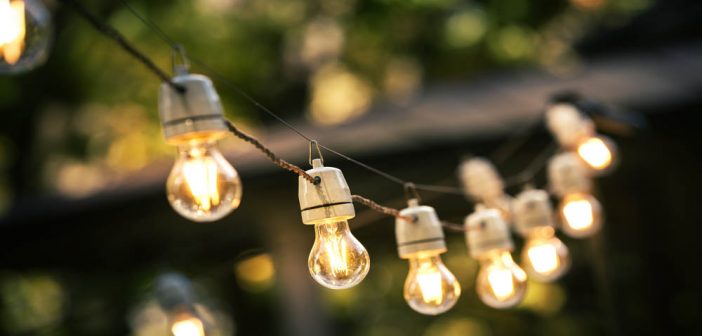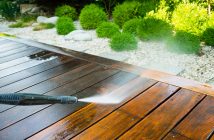Outdoor lighting provides many benefits to the exterior of your home. It provides curb appeal by showing off your homes best features and provides a way to safely navigate the terrain when you come home at night. Lighting your home can also protect you from thieves. Wintertime is when the darkness lasts the longest, when you need lights the most. For that reason, it is essential to keep your lighting maintained all year long, but especially during the winter. Here are some tips to maintain your outdoor lighting this winter.
Clean the Lights
Anytime you have precipitation, whether it is rain or snow, you run the risk of getting spots on your lights. Dust can also stick to the lights and collect residue. A grimy lens can result in the lights not being as bright as they should be. If the grime gets inside a light, it could stop functioning. It is a good idea to check on your lights periodically to see if they need to be cleaned.
Check the Wires
During the winter the ground freezes and thaws regularly. This causes the ground to expand and contract, causing wires that are buried to make their way to the surface. Wires on the surface can present problems. First, they are a tripping hazard. Second, they can become frayed or get cut. In the warmer parts of the winter cycle, make sure that no wires are exposed. Burying wires back into the ground is not as difficult as you think, especially if the ground is thawed.
Change the Bulbs
Bulbs can break or burn out during any part of the year. A light bulb that is no longer working should be replaced to ensure that walkways are safe for pedestrians and keep prowlers at bay. Inspect your lights regularly for blown out or broken bulbs.
Clear Debris
Autumn is a time when leaves fall and cover everything on the ground. During the fall and winter plenty of leaves, twigs and branches fall to the ground and can get in the way of your lights. Clear away any debris to ensure that your lights can do their job.
Check the Brightness
There are many things that can affect how dim or bright your exterior lighting is. If you have lighting that shines on or near trees, you should check their brightness once all the leaves have fallen off. Without the leaves to create a filter or a shade, you may find that the lighting seems brighter. Bright lighting may not be a problem unless the light is pointed directly at your house. If you have a bright light shining in your window, you can move the light or turn down its brightness. You may also want to check the positioning of other lights once the trees are bare to make sure that you are not blinding your neighbors with your lights.
Remove Snow
Snow falls periodically all winter long. You can shovel around your lights or take a brush or broom and sweep around them to give them the space they need to do their job. It is important to keep the snow off of the lights to prevent ice from forming and doing damage to your wires and fixtures.
Set the Timer
As the seasons change, so do sunrise and sunset. Some lights have devices that detect the light and turn on as the sun sets. Others have timers that you can set and forget. If your lights are on a timer, you may want to adjust the timer to the season. If not, you could leave your home vulnerable to injury or theft. Daylight savings time is often a good time to review your lighting schedule and adjust your lights accordingly.
Exterior lights are a nice cosmetic feature for your home, but they also serve important purposes as well. Make sure that your lights are well maintained and are in proper working order to ensure that your family can safely enjoy winter evenings.









